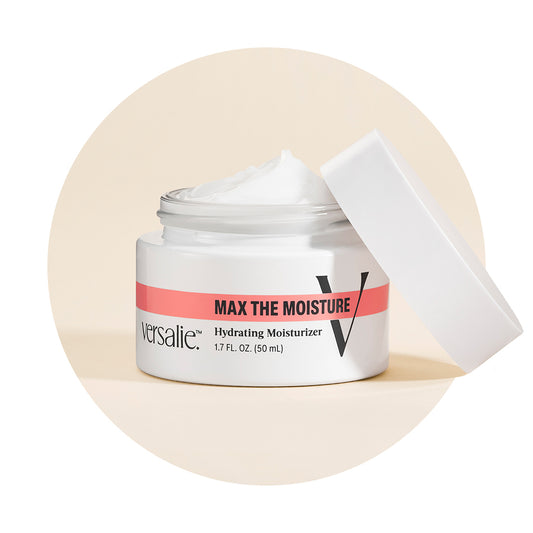What is endometriosis?
Endometriosis is a condition where tissue that’s similar to the lining of the uterus (the endometrium) grows outside of the uterus. With each menstrual cycle, those tissues thicken and bleed in the same way as the lining inside the uterus. This causes pain and swelling because the tissue grows and bleeds in an area of the body that it can’t easily shed.
Endometriosis is an estrogen-dependent, chronic condition. And it’s pretty common, affecting at least 11% of females in the United States (that’s 6.5 million people!) and is most common during their 30s and 40s. There’s not one specific cause of endometriosis. Scientists believe that there are genetic, hormonal, and immune system factors that can contribute to the likelihood of developing endometriosis.
Symptoms of endometriosis can include:
- Pain. This is the most common symptom. People with endometriosis may experience pain in different parts of their bodies including:
- Very painful menstrual cramps.
- Long-term pain in the lower back and pelvis.
- A “deep” pain during or after sex.
- Intestinal pain.
- Painful bowel movements or pain when urinating during menstrual periods. In rare cases, there may be blood in the stool or urine.
- Bleeding or spotting between periods. This may also be caused by something else, so talk to your provider if this happens often.
- Infertility, or not being able to get pregnant.
- Stomach (digestive) problems. These include diarrhea, constipation, bloating, or nausea, especially during menstrual periods.
If the endometrial tissue continues to expand, it can cause further health problems, like:
- Blocking the fallopian tubes and trapping blood in the ovaries, which can form cysts.
- Inflammation or swelling.
- Forming scar tissue and adhesions. Adhesions are a type of tissue that can bind your organs together. This can cause pelvic pain and make it hard to get pregnant.
- Bladder and intestinal problems.
In addition to the physical symptoms, having endometriosis can also impact emotional and mental health. Some people may feel anxious, depressed, or have trouble sleeping. Some other people may also struggle with relationships and their work.
There’s no specific lab or blood test to check for endometriosis. This can make it difficult to diagnose. Some imaging tests such as ultrasound or MRI scans can diagnose endometriosis. But the most accurate way to diagnose it is a laparoscopy — a surgery where a small camera is inserted into the abdomen to look for endometrial tissue.

How does menopause affect endometriosis?
For many women, symptoms of endometriosis become less severe or even disappear entirely after menopause. This is because during the menopausal transition, the ovaries release less estrogen and progesterone, which are the hormones that make the endometrial tissue grow. However, some people may continue to experience endometriosis symptoms after menopause — 2-5% of cases of endometriosis occur after menopause.
There are several reasons why endometriosis symptoms may persist after menopause. One reason is that some endometrial tissue may remain in the body after menopause. This tissue can continue to grow and cause pain and other symptoms.
How does taking menopausal hormone therapy (MHT) impact endometriosis?
MHT can help ease menopausal symptoms, like hot flashes and night sweats. But it can also make the endometrial tissue grow because it contains estrogen. For those considering MHT, it’s important to consider the benefits and risks of therapy and talk to their healthcare provider.
For those taking MHT and experiencing endometriosis symptoms, it’s also important to talk to their doctor. They may recommend adjusting the dosage of MHT or switching to a different type of therapy. Postmenopause, some of the symptoms can be non-specific, so it’s important to share your health history with your provider.
Is it possible to develop endometriosis after menopause?
Yes, it’s possible for postmenopausal people to develop endometriosis. This is because the endometrial tissue can continue to grow even after menopause, especially if the person is taking MHT.
Postmenopausal people experiencing endometriosis symptoms should talk to their healthcare provider. They can confirm whether it's endometriosis and recommend treatment options.
How is endometriosis treated?
Endometriosis is usually treated with medication or surgery. The recommended treatment will depend on how bad the symptoms are, the person’s age, and their overall health.
Medication for endometriosis
Before and after menopause, medications can be used to help relieve pain, reduce inflammation, and prevent the growth of the endometrial tissue. Healthcare providers may prescribe nonsteroidal anti-inflammatory drugs (NSAIDs), such as ibuprofen and naproxen, to help relieve pain associated with endometriosis.
Before menopause, your healthcare provider may also consider hormonal therapy, like birth control pills and progestin therapy. After menopause, your provider may consider prescribing menopausal hormone therapy that contains both estrogen and progesterone.

Surgery to treat endometriosis
Before menopause, surgery can be used to remove the endometrial tissue and make it easier to get pregnant. Postmenopause, surgery can also be used to remove endometrial tissue that may still be there.
Common surgical procedures used to treat endometriosis before and after menopause include laparoscopy and hysterectomy. A reminder that if both ovaries are removed during a hysterectomy (a total hysterectomy), the person often begins to experience menopause-like symptoms right away.
What are the challenges of treating endometriosis after menopause?
There are several challenges associated with treating endometriosis after menopause. One challenge is that the symptoms of endometriosis and menopause can be similar. This can make it difficult to tell if it’s endometriosis or menopause.
Another issue in treating endometriosis after menopause is that it’s often more challenging to treat. This is because endometrial tissue is usually more resistant to treatment after menopause.

How can I manage endometriosis during menopause?
Endometriosis is a challenging condition, but there are several things that can be done to manage it and improve quality of life:
- Talk to your healthcare provider. Talk to your provider about your symptoms and treatment options. There are different treatments for endometriosis, and the best treatment for each person will depend on their individual circumstances.
- Join a support group. There are support groups available for people experiencing endometriosis. These groups can offer a sense of community and support, and they can also be a source of information about the condition.
- Take care of your physical and mental health. People with endometriosis are at an increased risk for other health conditions, like depression and anxiety. It’s important for those with endometriosis to take care of their overall health by exercising, eating healthy foods, and getting enough rest.
References
Australasian Menopause Society. Endometriosis – Management after menopause. Accessed 1/2/24 from https://www.menopause.org.au/images/stories/infosheets/docs/AMS_Endometriosis_management_after_menopause.pdf
British Menopause Society. (2022). Induced menopause in women with endometriosis – for patients. Accessed 1/2/24 from https://www.womens-health-concern.org/wp-content/uploads/2022/12/14-WHC-FACTSHEET-Induced-menopause-info-for-women-NOV2022-A.pdf
MedicalNewsToday. (2023). What to know about endometriosis and menopause. Accessed 1/2/24 from https://www.medicalnewstoday.com/articles/endometriosis-and-menopause
Secosan, C., Balulescu, L., Brasoveanu, S., Balint, O., Pirtea, P., Dorin, G., & Pirtea, L. (2020). Endometriosis in menopause – Renewed attention on a controversial disease. Diagnostics (Basel), 10(3): 134. doi: 10.3390/diagnostics10030134
U.S. Department of Health & Human Services, Office on Women’s Health. Endometriosis. Accessed 1/2/24 from https://www.womenshealth.gov/a-z-topics/endometriosis








